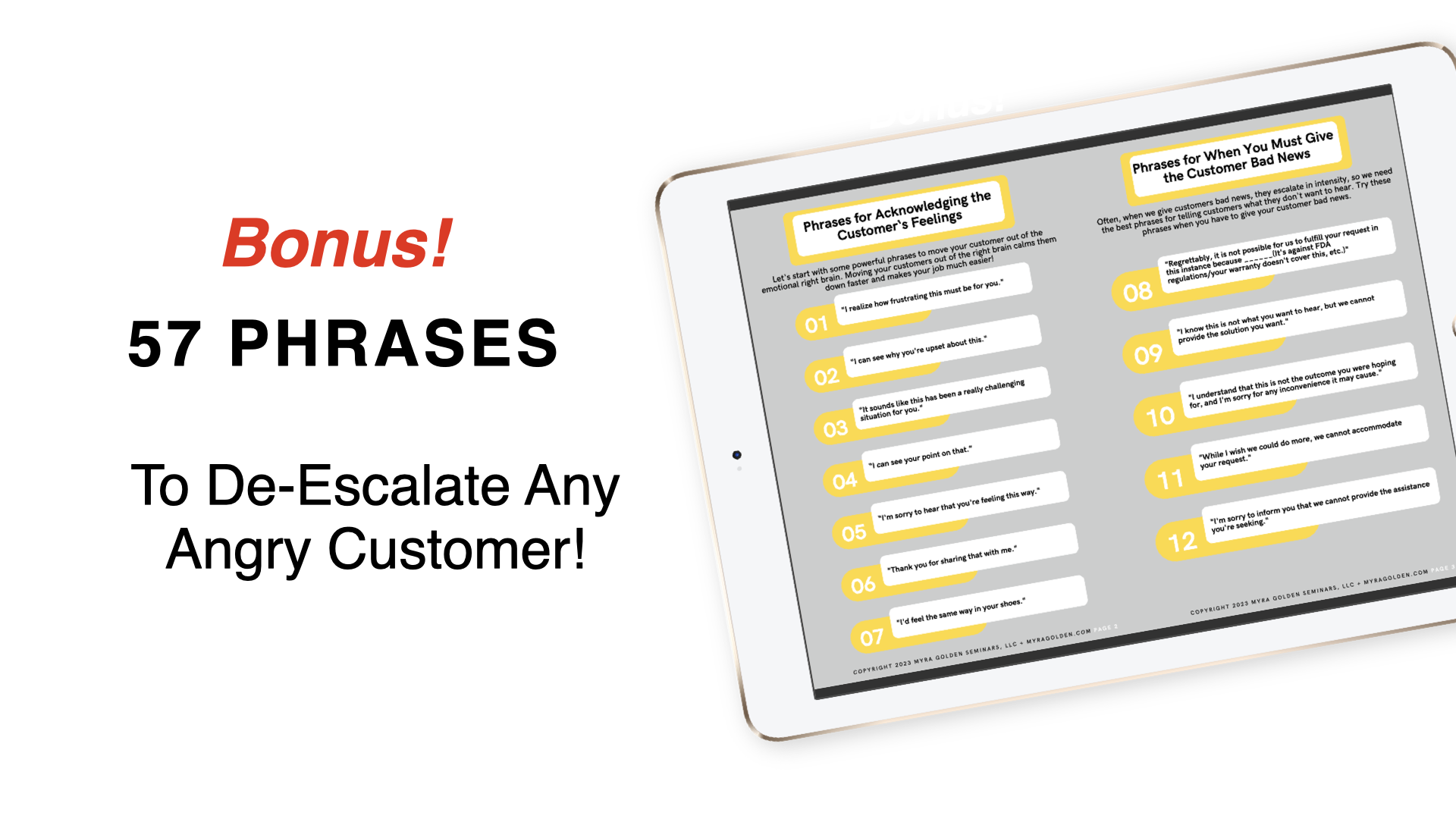When You Can't Solve the Customer's Issue Immediately, Try This.

When you can't solve the customer's issue immediately, how do you move the conversation forward and to closure?
One of the most challenging interactions you'll have with customers is when you can't do what they want - when you must deny a request, say no, or can't give a solution at that moment.
But you can easily guide customers to the next steps, even when you can't solve the problem by doing five things.
One. Control the Conversation
Control the conversation by talking assertively. When you're assertive, you sound more confident and in control. My definition of assertiveness is, Say what you mean, mean what you say, and don't be mean when you say it. Customers who see you as in control and confident are more likely to accept your word as final.
Two. Be Transparent
When an immediate solution isn't available, customers want to know why, what's next, and any options they can take.
Answer these questions, and you'll get less venting and pushback, moving the conversation to closure faster.
I want you to explain to your customer, "Here's what we know______. Here's what we've done. Here's what's next___________."
Application:
Hotel valet brought our family's rental car to us wrecked! There was no immediate solution to repairing or compensating for the damage. Here's how the hotel handled our problem transparently. The valet employee explained:
Here's what we know: The accident happened in our parking garage at 7:42 pm. The driver was in a white Honda Civic, license #. He sped off and left the scene.
Here's what we've done: We've filed a claim with our loss-prevention team. We have two eyewitnesses. We have filed a police report with the Austin Police Department.
Here's what's next: You also need to file a police report. You need to notify both your insurance company and your rental car company. Your insurance company will go after the driver.
Transparency helps you guide customers to the next steps faster, even when you can't fix the problem, because you're proactively answering each of your customer's burning questions!
Three. Express empathy
Identify your customer's biggest pain point, and acknowledge that concern. When you recognize your customer's concerns, you validate them, and they can let go of venting because they feel heard and understood - even though you can't solve their problem.
Do it this way:
"I realize it's upsetting to hear that you'll have to retake your exam and apply for a new license, particularly because you need it right now."
Four. Demonstrate urgency
When you can't give your customer an answer or solution at the moment, show a sense of urgency with your words. Here are some examples.
"Although I cannot provide an immediate solution, I assure you that we are working on it."
"We want to get to the bottom of this as much as you do." (And then explain your next steps."
If you have a first-step solution or an option, present it this way: "My immediate solution would be..."
Five. Manage Expectations
One of the hardest things to tell a customer is 'no.' Yet, often, it comes down to "No, we can't do that." You can deny a request if you do it with empathy and manage expectations. Here are some examples.
"I wish there was another way. I know your business depends on you having your license. XYZ will not renew any license until all penalties are met and cleared."
This statement conveys empathy, clearly explains the denial, and manages expectations.
"I realize this is not what you want to hear as you move into your new apartment. There is an outstanding debt on this meter. XYZ City Water will not establish services on any meter with liability attached, regardless of who is responsible for the debt."
Like the response above, this statement conveys empathy and clearly explains the denial while managing expectations.
With these five steps, you can handle one of the most challenging customer interactions - not having a current solution. Using these steps, you'll feel and sound more confident, and customers will follow your confident approach to the next steps, accepting your word as final.
Continue the conversation with me?
Here are some resources to help you manage challenging customer conversations.
57 Phrases to Get Any Angry Customer to Back Down

What can you do to get an angry customer to listen to you? I have a few tips and tactics for preempting escalations and getting customers to accept your words as final.
I have divided this post into challenging situations you will likely encounter. With my phrases, you can feel confident, talk assertively, and get your customers to stop screaming and listen to you!
Grab your 57 phrases here.
De-escalation Academy
De-escalation Academy is the only training for customer service that not only shows your employees how to redirect verbal aggression and regain control of interactions - but how to get customers to accept their word as final. Learn more and enroll your team!
How to Sound and Feel Confident When De-escalating Angry Customers
This article explores customer service de-escalation techniques to help you sound confident when dealing with challenging customers. Bonus: Videos included! Read my article!
De-escalation Academy
The step-by-step, psychology-backed system that helps your team handle any tough customer interaction with calm, control, and confidence—on the phone, in person, or in chat.
Join Myra’s Inner Circle: Insights, Strategies, and Resources for Leaders Who Demand the Best.
Be the first to receive exclusive strategies, curated resources, and behind-the-scenes insights from Myra Golden—crafted for leaders who value excellence.
Your information will remain private and protected—always.

